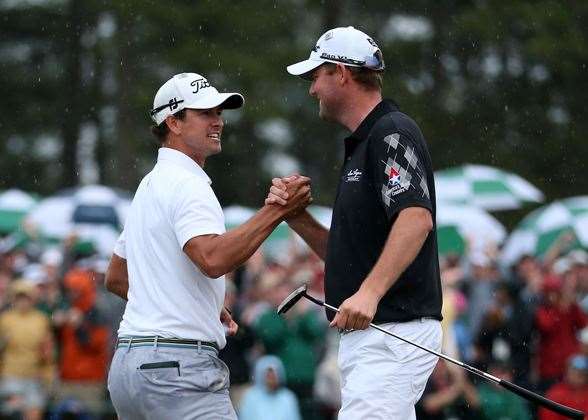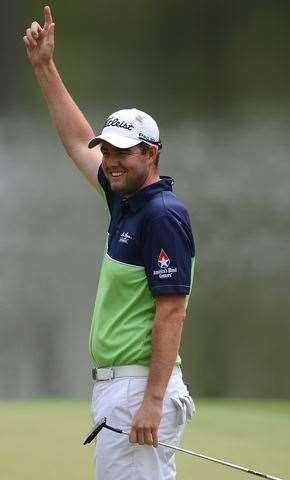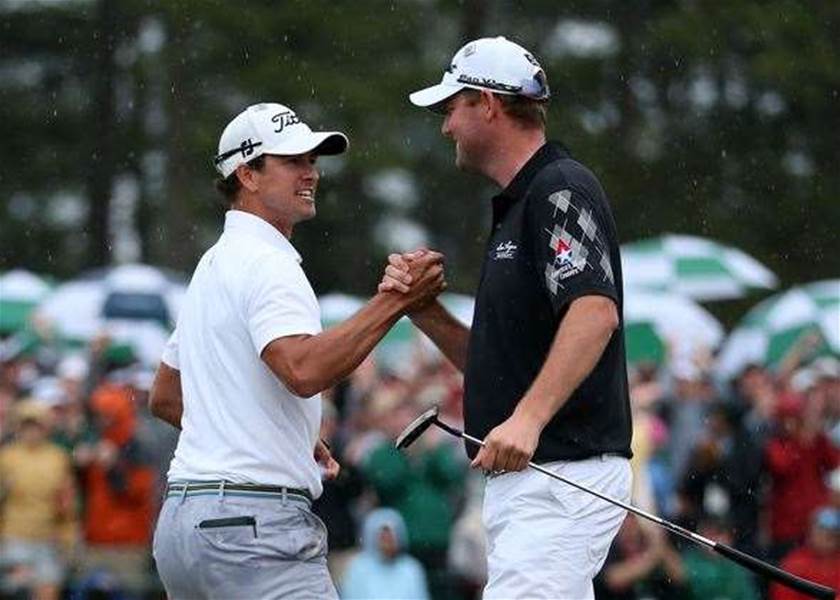After a stellar performance at the Masters, Marc Leishman is armed and ready to contend at the PGA Championship, writes Steve Keipert.
Momentum is an intriguing intangible when it comes to golf. Any seasoned Tour pro will tell you that 80 percent of prizemoney is gleaned from 20 percent of tournaments played, making it a career essential to take advantage of purple patches.
One player riding a wave of major momentum is Marc Leishman. The Victorian turned heads at Augusta National in April when he co-led the Masters after the first round and spent the remaining 54 holes within arm’s length of the lead. Partially glossed over amid the euphoria of Adam Scott’s victory and Jason Day’s near-miss was that Leishman, who was paired with Scott that joyous Sunday, was still a factor in the outcome deep into the final nine holes. He was still just a stroke off the lead and tied with Scott after negotiating Augusta’s tricky 12th hole. While Scott was ruthlessly efficient over the closing holes, in hindsight the final plot requires only minor tweaks to see Leishman wearing the green jacket instead. Yet in this episode Leishman had to be content with playing a supporting role.
 Adam Scott celebrates with playing partner Marc Leishman after making a birdie on the 72nd hole en route to winning the Masters. PHOTO: GETTY IMAGES
Adam Scott celebrates with playing partner Marc Leishman after making a birdie on the 72nd hole en route to winning the Masters. PHOTO: GETTY IMAGES“My form had been reasonably good all year – the results hadn’t been there but I was really close to putting it all together,” he said, noting that while his Masters finish may have shocked others, it didn’t surprise him. “I had a top-ten in Hawaii, I was driving it well certain weeks, putting well certain weeks, hitting my irons really well, my short game was strong but I just wasn’t putting it together. Coming off a week off leading up to the Masters, I was fresh and ready to go and put it all together, which was great.”
A tie for fourth represented a huge step forward for the burly 29-year-old, the experience providing a week-long insight into what carrying the lead at a major championship and contending at the highest level feels like. It was his first top-ten result at a major; in fact his first top-25, and the performance stoked a latent fire within.
“It was different,” Leishman reflects three months later. “There was obviously a lot more attention on me but it was good, I enjoyed it. It’s something I’d like to do a lot more, that’s for sure.
“To be there when Scotty won was great … Looking back on it, I wish it was me but it was still a great week for me even though I didn’t win. I look back on it as a great memory and I’m not disappointed. It would have been nice for them to have slipped the green jacket on me but I’ve got a lot of confidence for Augusta next year. I’ve got some good images in my head of the kind of shots I hit and there’s no reason why one of us can’t win it again next year.”
Leishman will enter the fray for the year’s final major at Oak Hill Country Club this week knowing he has the arsenal to do more than merely contend. He won for the first time on the US PGA Tour in June 2012 but listening to him reflect on his time in the spotlight at the Masters, it is evident Leishman revelled in the surroundings and gained from it.
“It obviously gave me a lot of confidence,” he told Golf Australia ahead of his next start at a major. “I went in thinking there was a good chance I could play well but until you actually do it, you never know. I definitely went to the US Open with a different mindset. Even the tournament straight after the Masters at Hilton Head and the Players, I went there with a lot of confidence and looking to win the event. You do every week but I went there with a real belief that if I played well I could definitely pull it off.”
While lamenting a missed opportunity, the overall Augusta experience definitely had a positive effect on Leishman. “It was good to know that [my game] held up again under the pressure, so next time – and hopefully I’m in contention in another major fairly soon – I’ll know that … I’ve got the right tools.”
 Leishman makes a long bomb putt during the opening round of the Masters. "It was good to lead a major and I learned from it," he says. PHOTO: GETTY IMAGES.
Leishman makes a long bomb putt during the opening round of the Masters. "It was good to lead a major and I learned from it," he says. PHOTO: GETTY IMAGES.No manipulating is needed to make Oak Hill brutal, which plays into Leishman’s hands as he has a natural liking for tough courses. “I know it’s pretty long, tight, there’s going to be long rough. It’s going to be a tough test, that’s for sure,” he says, having only previously driven in the gates at Oak Hill while competing at a Nationwide Tour event across the street. “I enjoy playing the tougher courses. I like it when par’s a good score. I can’t say I enjoy it too much when over-par is a good score but I definitely enjoy it when you’re making pars and not losing ground. It seems to be like that at the Masters and I’m guessing it’ll be the same at Oak Hill.
“I can play both ways,” he adds. “In Hartford, where I won last year, 14-under won so I enjoy that golf, too. It’s just a bit of a change to a normal Tour event when you can shoot five- or six-under for the tournament and you’re going to be thereabouts.”
Results back up Leishman’s assertion. Consistently strong performances at difficult venues like Torrey Pines, Bay Hill, Cog Hill, Aronimink (which, like Oak Hill, is a Donald Ross design), Waialae, Harbour Town and TPC Four Seasons Resort add credence to his argument. Of the 13 times Leishman has finished in the top-ten on Tour, the winning total has averaged a comparatively modest 13.8 strokes below par with several winning scores in single figures.
So Leishman and Oak Hill are good fit at a place where birdies are like gold and pars exceptional. Indeed, the factor most likely to be a snag in Leishman’s suitability to the PGA venue is entirely external – his wife Audrey is due to give birth to their second son the week after the championship. Marc fully intends to play but will monitor Audrey’s condition and is comfortable with being a last-minute withdrawal if necessary.
Related Articles

International Spotlight: Omanu Golf Club

Column: Hard miles in the Oban rain













